Stages of Latamarko Cocoa Powder Production from Seed to Chocolate:
Cultivation and Harvesting:
-
- Cocoa trees are grown in tropical regions.
- Cocoa pods are harvested, containing cocoa beans.
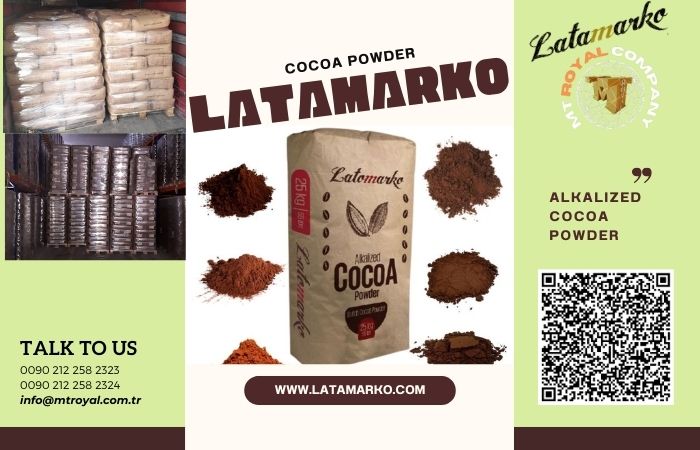
Cultivation and Harvesting of Latamarko Cocoa Powder:
- Growing Regions:
- Cocoa trees (Theobroma cacao) are primarily cultivated in tropical regions, typically within 20 degrees north and south of the equator.
- Main cocoa-producing countries include Ivory Coast, Ghana, Indonesia, Nigeria, and Ecuador.
- Cocoa Tree Characteristics:
- Cocoa trees are evergreen and require specific climate conditions, including warm temperatures, high humidity, and abundant rainfall.
- Planting and Growth:
- Cocoa cultivation starts with planting cocoa tree seeds in nurseries.
- Seedlings are transplanted to the field when they reach a suitable size.
- The trees start producing cocoa pods after about three to five years.
- Cocoa Pods:
- Cocoa trees bear large, colorful pods containing cocoa beans.
- Pods typically vary in color, including red, yellow, green, and purple, depending on the variety.
- Harvesting Cocoa Pods:
- Harvesting is a labor-intensive process.
- Farmers carefully cut ripe cocoa pods from the trees using machetes or specialized tools.
- Only fully mature pods are harvested, as they contain fully developed cocoa beans.
- Frequency of Harvesting:
- Cocoa trees can produce pods year-round.
- Farmers may harvest pods every few weeks or months, depending on the specific conditions of the cocoa plantation.
- Post-Harvest Handling:
- Harvested pods are collected in baskets or sacks.
- The harvested pods are opened to extract the cocoa beans and the surrounding pulp.
- Fermentation:
- After extraction, the cocoa beans are typically subjected to a fermentation process. The beans, still encased in pulp, are placed in heaps or containers to ferment.
- Fermentation is a crucial step in developing the flavor and aroma of the cocoa beans.
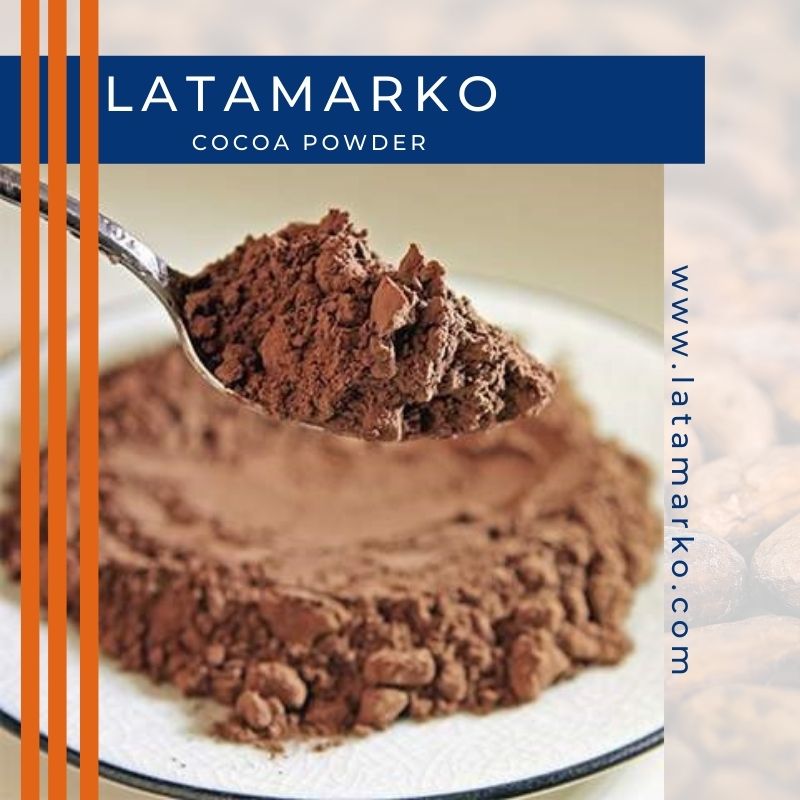
The cultivation and harvesting of cocoa involve a combination of traditional agricultural practices and modern techniques. Sustainable and ethical practices in cocoa farming are increasingly emphasized to ensure fair treatment of farmers, protect the environment, and maintain the long-term viability of cocoa production.
Fermentation:
-
- Beans are extracted and placed in heaps to ferment.
- Fermentation develops chocolate flavor and reduces bitterness.
Fermentation in Cocoa Processing:
- Extraction of Cocoa Beans:
- After harvesting, cocoa pods are opened to extract the cocoa beans along with the surrounding pulp.
- Fermentation Piles or Bins:
- The extracted beans, still coated with pulp, are placed in heaps or fermentation bins.
- The beans and pulp mixture is sometimes covered with banana leaves or other materials to create a controlled fermentation environment.
- Microbial Activity:
- Natural microorganisms, including yeasts and bacteria present on the beans and in the environment, initiate the fermentation process.
- Fermentation is a microbial-driven process that transforms the raw cocoa beans.
- Chemical Changes:
- During fermentation, various chemical reactions occur within the beans:
- Acidification: The pulp surrounding the beans undergoes acidification, leading to a decrease in pH.
- Temperature Increase: Heat is generated as a byproduct of fermentation, contributing to the breakdown of proteins and other compounds.
- Sugar to Alcohol Conversion: Sugars in the pulp are converted into alcohol and other byproducts.
- During fermentation, various chemical reactions occur within the beans:
- Flavor Development:
- Fermentation plays a crucial role in developing the characteristic chocolate flavor. The breakdown of compounds during fermentation contributes to the development of specific flavor precursors.
- Bitterness Reduction:
- Bitter compounds, such as polyphenols, are reduced during fermentation.
- This reduction in bitterness is essential for creating a well-balanced and palatable chocolate flavor.
- Duration of Fermentation:
- The duration of fermentation varies, typically lasting several days.
- Longer fermentation periods can enhance the complexity and depth of chocolate flavor.
- Turning or Mixing:
- In some cases, farmers turn or mix the beans during fermentation to ensure even and thorough fermentation.
- This step helps maintain uniform conditions for all beans in the batch.
- End of Fermentation:
- Fermentation is considered complete when the beans have reached the desired flavor profile.
- Overfermentation can lead to off-flavors, so careful monitoring is essential.
- Drying:
- After fermentation, the beans are spread out to dry in the sun or using drying equipment.
- Proper drying is crucial to prevent mold growth and ensure the quality of the beans.
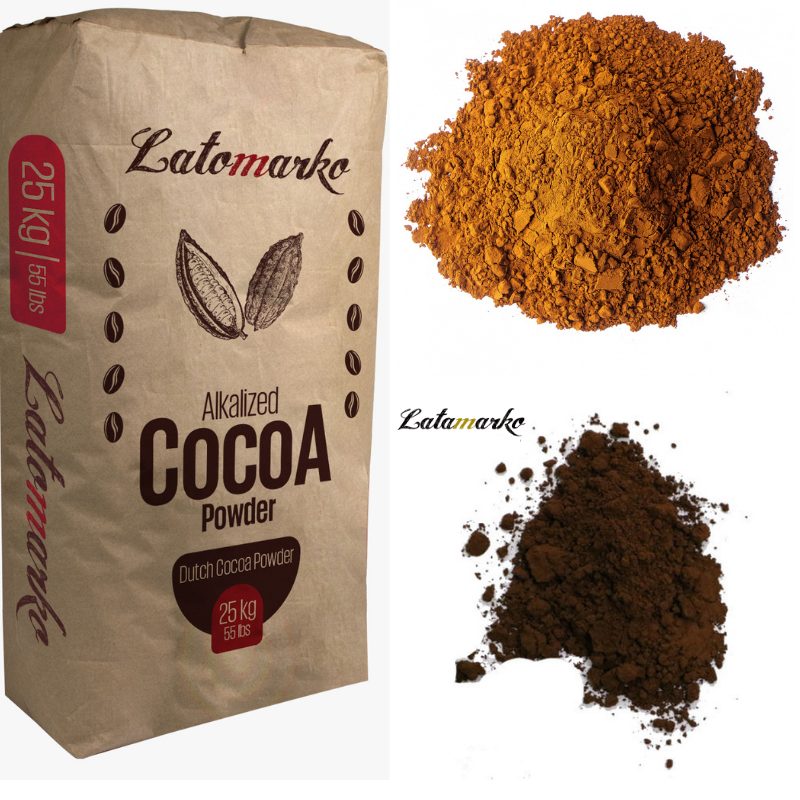
Fermentation is a critical step in cocoa processing, significantly influencing the flavor, aroma, and quality of the final chocolate product. The controlled microbial activity and chemical changes during fermentation contribute to the unique characteristics of each batch of cocoa beans.
Drying:
-
- Dried in the sun or using drying equipment to remove moisture.
Drying in Latamarko Cocoa Powder Processing:
After the fermentation process, the Latamarko Cocoa Powder beans are subjected to the drying phase, a critical step in cocoa processing. Proper drying is essential for achieving the desired quality of the cocoa beans and preventing mold growth. Here is an overview of the drying process:
- Spread Out for Drying:
- Following fermentation, the beans, still covered in pulp, are spread out in thin layers.
- The traditional method involves laying the beans on wooden platforms, mats, or concrete surfaces.
- Sun Drying:
- The most common and traditional approach is to dry the beans in the sun.
- The spread-out beans are exposed to sunlight for several days.
- Farmers regularly turn or stir the beans to ensure uniform drying.
- Drying Equipment:
- In addition to sun drying, some cocoa processing facilities use drying equipment for a more controlled and efficient drying process.
- Drying equipment can include rotary dryers, convection ovens, or other specialized machines.
- Controlled Drying Conditions:
- Controlled drying conditions help prevent over-drying or under-drying, both of which can negatively impact the quality of the cocoa beans.
- Over-drying can lead to a loss of flavor precursors, while under-drying can result in mold growth.
- Moisture Content Monitoring:
- The moisture content of the beans is monitored during the drying process.
- The target moisture content varies but is typically around 7% to 8%.
- Duration of Drying:
- The duration of drying depends on various factors, including weather conditions, drying method, and the initial moisture content of the beans.
- Drying can take anywhere from a few days to a couple of weeks.
- Uniformity in Drying:
- Achieving uniform drying is crucial to ensure that all beans in the batch reach the desired moisture content.
- Regular turning or stirring of the beans helps maintain uniformity.
- Quality Considerations:
- Properly dried cocoa beans should have a distinct snap when broken and a uniform color.
- The drying process contributes to the preservation of the cocoa flavor and prevents the growth of undesirable microorganisms.
- Storage:
- Once dried, the cocoa beans are ready for storage and further processing.
- Properly dried beans can be stored for an extended period without the risk of spoilage.
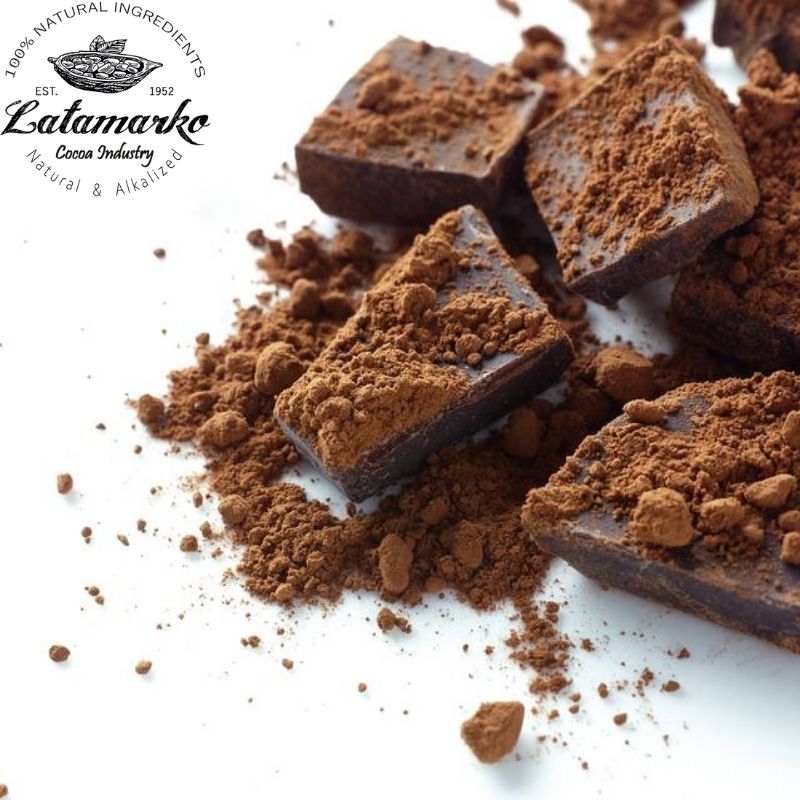
The drying phase is a critical step in the post-harvest processing of cocoa beans. It ensures the preservation of the flavor developed during fermentation, contributes to the quality of the final chocolate product, and facilitates the storage and transport of cocoa beans to chocolate manufacturing facilities.
Roasting:
-
- Roasted to develop flavors and remove remaining moisture.
Roasting in Latamarko Cocoa Powder Processing:
Roasting is a crucial step in cocoa processing that follows the drying phase. This process involves subjecting the dried cocoa beans to heat, which serves multiple purposes, including flavor development, removal of remaining moisture, and the enhancement of certain desirable characteristics. Here’s an overview of the roasting process:
- Preheating:
- The dried cocoa beans are preheated before entering the roasting chamber. This helps to ensure even roasting and the consistent application of heat.
- Roasting Chamber:
- The preheated cocoa beans are then introduced into a roasting chamber or drum.
- The roasting chamber is typically a rotating drum that allows for uniform exposure of the beans to heat.
- Application of Heat:
- Heat is applied to the cocoa beans through the walls of the roasting chamber or by direct application of hot air.
- The temperature and duration of roasting are carefully controlled, as they significantly influence the flavor profile of the chocolate.
- Flavor Development:
- Roasting plays a crucial role in the development of the characteristic chocolate flavor.
- The heat causes chemical reactions, such as Maillard browning and caramelization, which contribute to the creation of complex flavor compounds.
- Removal of Moisture:
- While the drying phase reduces the moisture content of the beans, roasting further eliminates any remaining moisture.
- The reduction in moisture content is important for preventing mold growth and ensuring the stability of the cocoa beans during storage.
- Temperature and Time:
- Roasting temperatures typically range from 248°F to 320°F (120°C to 160°C).
- The duration of roasting can vary, with shorter roasting times preserving more of the bean’s natural flavors, and longer roasting times enhancing the development of roasted and nutty notes.
- Monitoring:
- The roasting process is closely monitored to prevent over-roasting, which can lead to a burnt flavor, and to achieve the desired roast profile.
- Cooling:
- After roasting, the cocoa beans are rapidly cooled to halt the roasting process and prevent the beans from becoming over-roasted.
- Cracking and Shell Removal:
- Roasting causes the cocoa beans to crack, and the shells become more brittle.
- The cracked beans are then winnowed to remove the shells, leaving behind the cocoa nibs.
- Grinding:
- The cocoa nibs are ground into a paste known as chocolate liquor. The grinding process generates heat, contributing to the liquefaction of cocoa butter.
Roasting is a critical step that significantly influences the flavor, aroma, and color of the final chocolate product. The art and science of roasting involve finding the right balance of temperature and time to achieve the desired chocolate characteristics while preserving the unique qualities of the cocoa beans.
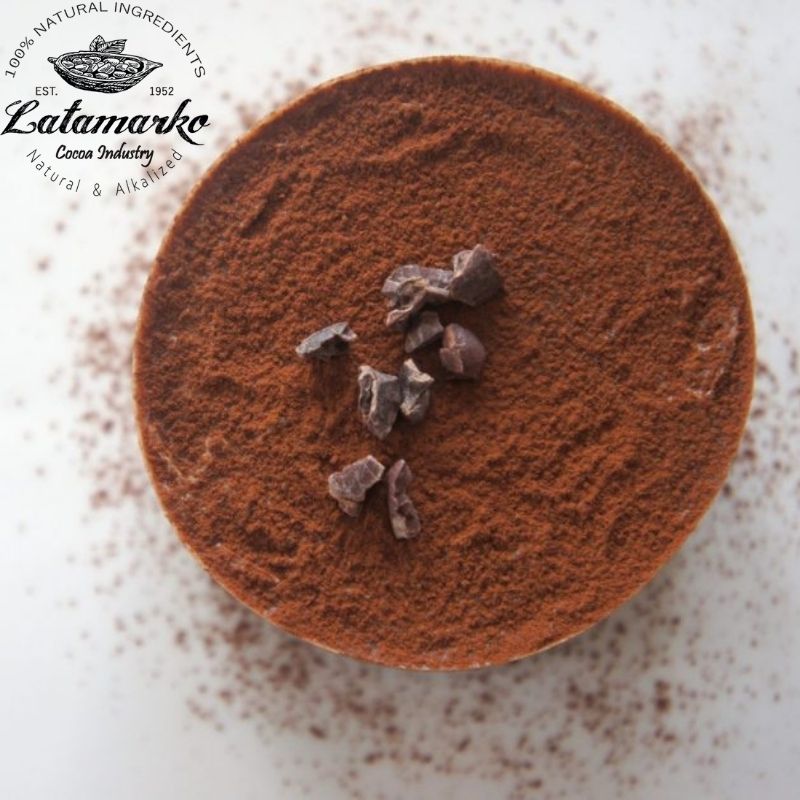
Winnowing:
-
- Outer shell is removed, leaving cocoa nibs.
Winnowing in Latamarko Cocoa Powder Processing:
Winnowing is a process in cocoa processing that follows the roasting phase. It involves the removal of the outer shell or husk from the cocoa beans, leaving behind the cocoa nibs. This step is essential for separating the desirable nibs, which contain both cocoa solids and cocoa butter, from the less desirable husk. Here is an overview of the winnowing process:
- Cracking:
- After roasting, the cocoa beans are typically cracked to break the outer shell and expose the nibs inside.
- The cracking process can be achieved using mechanical equipment or other methods that apply pressure to the roasted beans.
- Separation of Nibs and Shells:
- The cracked beans, consisting of both nibs and shells, are subjected to winnowing.
- Winnowing can be performed using various methods, but the goal is to separate the lighter shells from the denser nibs.
- Airflow or Mechanical Separation:
- Winnowing often involves the use of airflow or mechanical means to separate the lighter shells from the heavier nibs.
- Airflow methods utilize fans or blowers to create a stream of air that carries away the lighter husk particles, leaving the heavier nibs behind.
- Gravity Separation:
- In some cases, gravity is used to separate the shells from the nibs.
- The cracked beans may be dropped through a chute or a series of baffles where the lighter husk particles are carried away, and the heavier nibs fall to a collection point.
- Collection of Nibs:
- The separated cocoa nibs are collected for further processing.
- Nibs contain both cocoa solids and cocoa butter and serve as a key ingredient in the production of chocolate.
- Quality Control:
- The winnowing process is carefully monitored to ensure the effective separation of nibs and shells.
- Quality control measures may be implemented to identify and remove any remaining shell fragments from the nibs.
- Further Processing:
- After winnowing, the cocoa nibs can undergo various processes, including grinding and pressing, to extract cocoa butter and create chocolate liquor.
Winnowing is a critical step that helps refine the cocoa beans after roasting, separating the valuable nibs from the husk. This separation is fundamental for producing high-quality cocoa products, and the efficiency of the winnowing process contributes to the overall quality of the final chocolate.
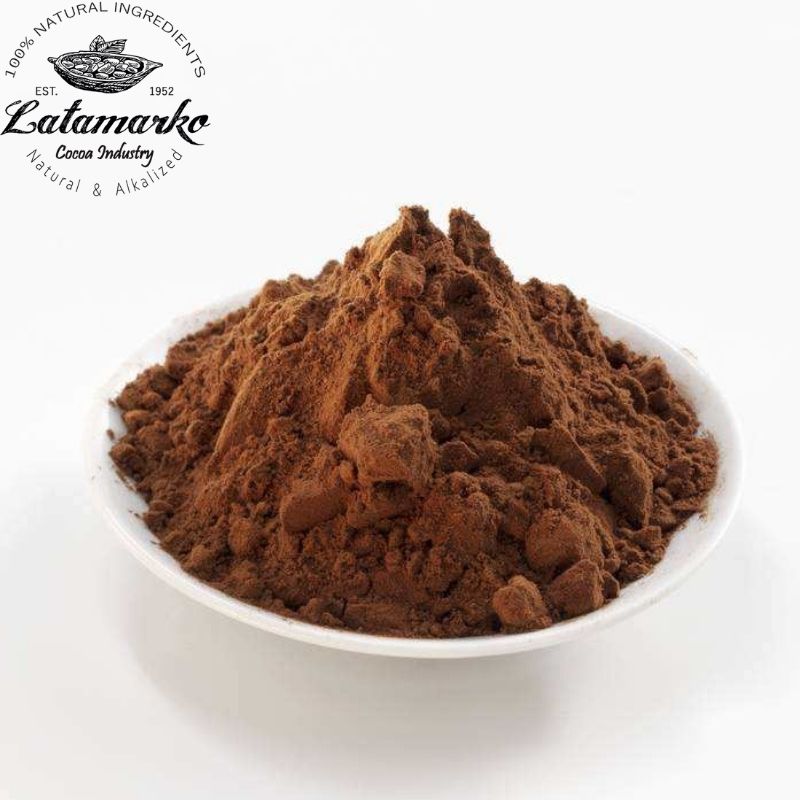
Grinding:
-
- Nibs are ground into chocolate liquor (cocoa solids + cocoa butter).
Grinding in Latamarko Cocoa Powder Processing:
After winnowing, the cocoa nibs undergo the grinding process to transform them into chocolate liquor. This grinding step is crucial in chocolate production as it results in the formation of chocolate liquor, which is a paste containing both cocoa solids and cocoa butter. Here’s an overview of the grinding process:
- Cocoa Nibs:
- After winnowing, the separated cocoa nibs are collected.
- Grinding Equipment:
- The nibs are fed into grinding equipment, such as mills or grinders.
- Grinding equipment can vary in design, ranging from stone mills to modern machinery.
- Friction and Heat Generation:
- The grinding process involves the application of mechanical force to break down the cocoa nibs into smaller particles.
- Friction generated during grinding produces heat, leading to the liquefaction of cocoa butter present in the nibs.
- Particle Size Reduction:
- The primary goal of grinding is to reduce the particle size of the cocoa nibs.
- Smaller particle sizes contribute to the smooth texture of the final chocolate product.
- Formation of Chocolate Liquor:
- As the nibs are ground, the cocoa solids and cocoa butter are combined to form a thick, fluid paste known as chocolate liquor.
- Chocolate liquor is composed of finely ground cocoa particles suspended in cocoa butter.
- Refining Process:
- Some chocolate manufacturers incorporate additional refining steps to further reduce particle size and achieve a smoother texture.
- Conching is one refining process that involves agitating and smoothing the chocolate liquor.
- Adjusting Particle Size:
- The degree of grinding can be adjusted to influence the texture and mouthfeel of the final chocolate product.
- Fine grinding results in a smoother texture, while coarser grinding may contribute to a more granular texture.
- Temperature Control:
- Temperature control is essential during grinding to prevent overheating.
- Excessive heat can adversely affect the quality of the chocolate, leading to changes in flavor and texture.
- Quality Control:
- The grinding process is carefully monitored for quality control.
- Manufacturers may check particle size distribution, moisture content, and other parameters to ensure consistency.
- Pressing (Optional):
- In some chocolate production processes, chocolate liquor may undergo pressing to separate cocoa solids from cocoa butter.
- The extracted cocoa butter can be used in various proportions to control the fat content in cocoa powder or chocolate products.
The grinding process is a critical step in chocolate manufacturing as it transforms the cocoa nibs into the primary ingredient, chocolate liquor. The quality and characteristics of the final chocolate product are influenced by the efficiency of the grinding process and subsequent refining steps.
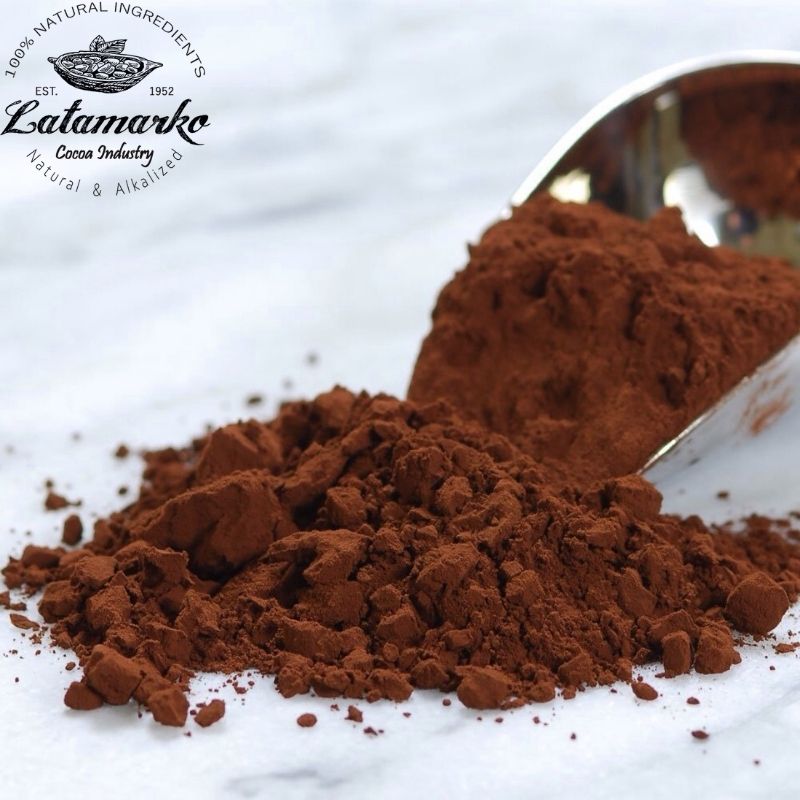
Pressing:
-
- Pressing separates cocoa solids from cocoa butter.
Pressing in Cocoa Processing:
Pressing is a step in cocoa processing that involves separating cocoa solids from cocoa butter. This process is optional and may be employed based on the desired characteristics of the final chocolate product. Here’s an overview of the pressing process:
- Chocolate Liquor:
- Chocolate liquor, produced through the grinding of cocoa nibs, contains both cocoa solids (particles) and cocoa butter (the natural fat present in cocoa beans).
- Introduction to Pressing:
- In the pressing step, chocolate liquor is introduced to a hydraulic press or expeller.
- The purpose is to extract cocoa butter from the chocolate liquor.
- Hydraulic Press or Expeller:
- Hydraulic presses and expellers are mechanical devices used to apply pressure to the chocolate liquor.
- The pressure squeezes out the cocoa butter, leaving behind a solid cake of cocoa solids.
- Separation of Cocoa Butter:
- Cocoa butter, being a fat, is separated from the cocoa solids under pressure.
- The extracted cocoa butter is collected, and its quality can impact the characteristics of the final chocolate product.
- Cocoa Cake:
- The remaining solid mass, known as cocoa cake or press cake, consists mainly of cocoa solids.
- The cocoa cake may be further processed into cocoa powder.
- Adjustable Pressing Conditions:
- The pressing conditions, including the amount of pressure applied and the duration of pressing, can be adjusted to achieve specific results.
- These adjustments influence the quality and properties of both the cocoa butter and cocoa solids.
- Uses of Pressed Cocoa Butter:
- The extracted cocoa butter can be used in various proportions in chocolate formulations.
- It may also be used in cosmetic and pharmaceutical applications due to its moisturizing properties.
- Cocoa Powder Production (Optional):
- If cocoa cake is produced through pressing, it can undergo additional processing steps to produce cocoa powder.
- The cocoa powder may undergo alkalization (Dutch processing) for specific applications.
- Quality Control:
- Quality control measures are implemented during the pressing process to ensure the separation of cocoa butter and cocoa solids is efficient and consistent.
- Parameters such as moisture content, fat content, and particle size may be monitored.
- Advantages of Pressing:
- Pressing can help control the fat content in chocolate products, allowing for the production of chocolates with varying textures and characteristics.
- It contributes to the versatility of cocoa ingredients for different applications.
It’s important to note that not all chocolate manufacturers use pressing in their processes. Some manufacturers may prefer to keep the cocoa butter in the chocolate liquor for a smoother and creamier texture. The decision to include pressing in the process depends on the specific requirements and goals of the chocolate production.
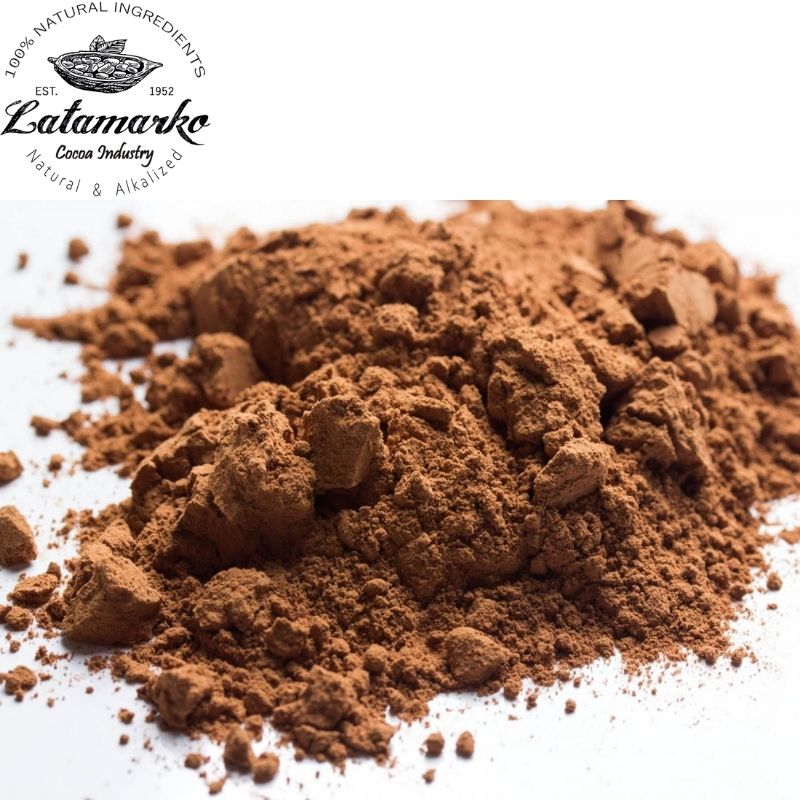
Milling:
-
- Cocoa solids are finely ground to produce cocoa powder.
Milling in Cocoa Processing:
Milling is a key step in cocoa processing that involves the fine grinding of cocoa solids to produce cocoa powder. This process follows pressing or other methods used to separate cocoa butter from cocoa solids. Here’s an overview of the milling process:
- Cocoa Cake or Press Cake:
- The solid mass obtained after pressing, known as cocoa cake or press cake, contains mainly cocoa solids.
- Introduction to Milling:
- Cocoa cake is introduced to milling equipment, such as mills or grinders.
- The milling process involves further reducing the particle size of the cocoa solids.
- Grinding Mechanism:
- The milling equipment employs grinding mechanisms, which may include grinding stones, rollers, or other abrasive surfaces.
- These mechanisms break down the cocoa cake into smaller particles.
- Particle Size Reduction:
- The primary goal of milling is to reduce the particle size of cocoa solids to produce a fine powder.
- Smaller particle sizes contribute to the smooth texture and easy dispersibility of cocoa powder.
- Controlled Process:
- The milling process is carefully controlled to achieve the desired particle size distribution.
- The duration of milling and the fineness of the grind are critical parameters.
- Quality Control:
- Quality control measures are implemented during milling to ensure consistency in particle size and other properties.
- Particle size analysis and other tests may be conducted to meet specific standards.
- Types of Cocoa Powder:
- The milling process can produce different types of cocoa powder, including:
- Natural Cocoa Powder: Retains the original chocolate flavor and a lighter color.
- Alkalized (Dutch-Processed) Cocoa Powder: Treated with an alkaline solution for a darker color and milder flavor.
- The milling process can produce different types of cocoa powder, including:
- Packaging:
- Once milling is complete, the resulting cocoa powder is typically packaged for distribution and use in various applications.
- Application in Food Industry:
- Cocoa powder is widely used in the food industry for baking, confectionery, beverages, and other applications.
- It serves as a key ingredient in products like cakes, cookies, chocolates, and hot cocoa.
- Varieties of Cocoa Powder:
- Cocoa powder can come in various varieties, including:
- High-Fat Cocoa Powder: Contains a higher percentage of cocoa butter for a richer flavor.
- Medium-Fat Cocoa Powder: Balanced cocoa butter content.
- Low-Fat (Reduced-Fat) Cocoa Powder: Lower cocoa butter content, suitable for certain dietary applications.
- Cocoa powder can come in various varieties, including:
Milling is a critical step in the production of cocoa powder, influencing the texture, color, and flavor of the final product. The characteristics of the cocoa powder can be tailored to meet specific industry and consumer preferences.
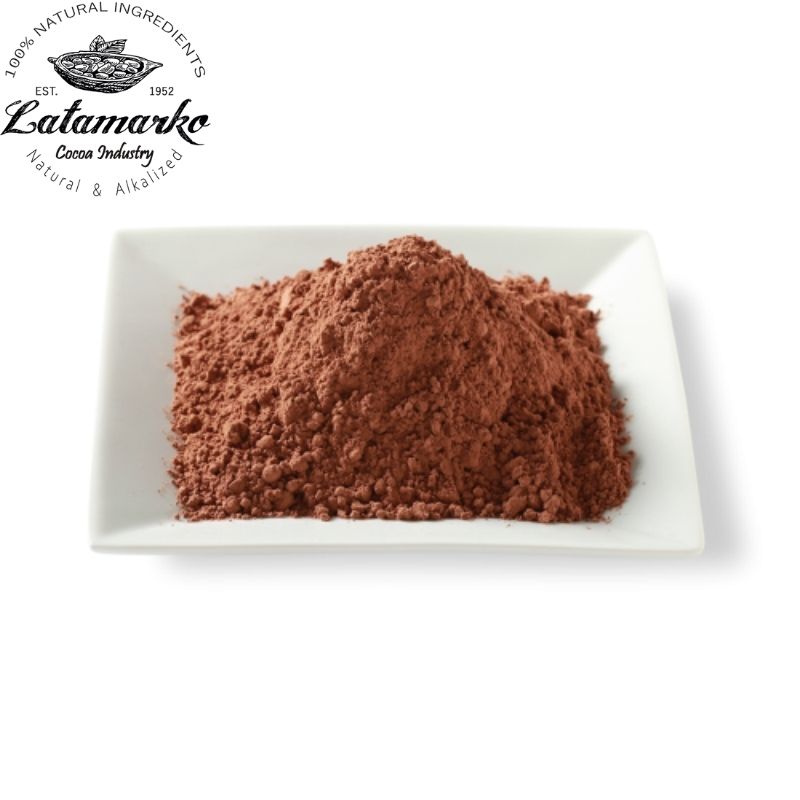
Blending and Conching:
-
- Cocoa powder may undergo blending and conching for desired texture.
Blending and Conching in Cocoa Processing:
After milling to produce cocoa powder, additional processing steps, such as blending and conching, may be employed to achieve the desired texture, flavor, and characteristics in the final chocolate product. Here’s an overview of blending and conching in cocoa processing:
- Blending:
- Blending involves the mixing of various ingredients, including cocoa powder, cocoa butter, sugar, and milk solids (if making milk chocolate).
- The goal is to achieve a uniform mixture and ensure that the ingredients are evenly distributed.
- Adjusting Formulation:
- Chocolate manufacturers can adjust the formulation during blending to achieve specific taste and texture profiles.
- The proportions of cocoa powder, cocoa butter, and sugar can be varied to achieve different chocolate varieties.
- Particle Size Distribution:
- Blending helps ensure a consistent particle size distribution throughout the chocolate mass.
- Uniform particle size contributes to the smooth texture of the final product.
- Conching:
- Conching is a process that involves further refining and smoothing the chocolate mass.
- The term “conch” refers to the vessel traditionally used for this process, which has a curved shape resembling a conch shell.
- Conching Mechanism:
- Conching machines are equipped with agitators or mixing elements that continuously move and knead the chocolate mass.
- The friction generated during conching contributes to further particle size reduction and the development of a smoother texture.
- Temperature Control:
- Conching is performed at controlled temperatures, typically between 110°F and 170°F (43°C to 77°C).
- Temperature control influences the crystallization of cocoa butter, affecting the texture and mouthfeel of the chocolate.
- Aeration and Volatile Compound Removal:
- Conching allows for aeration, which helps remove volatile compounds that contribute to off-flavors.
- The process enhances flavor development and removes any residual acidity.
- Duration of Conching:
- The duration of conching varies and can range from a few hours to several days.
- Longer conching times generally result in smoother chocolate with improved flavor characteristics.
- Quality Control:
- Quality control measures are implemented during blending and conching to ensure the chocolate meets specific standards.
- Samples may be taken for analysis, including taste testing and texture evaluation.
- Final Chocolate Mass:
- The end result of blending and conching is a refined and homogenized chocolate mass with improved flavor, texture, and mouthfeel.
- The chocolate mass is then tempered, molded, and cooled to create the final chocolate products.
Blending and conching are crucial steps in chocolate manufacturing, allowing for the optimization of texture, flavor, and overall quality. These processes contribute to the development of the characteristic smoothness and rich taste associated with high-quality chocolate.
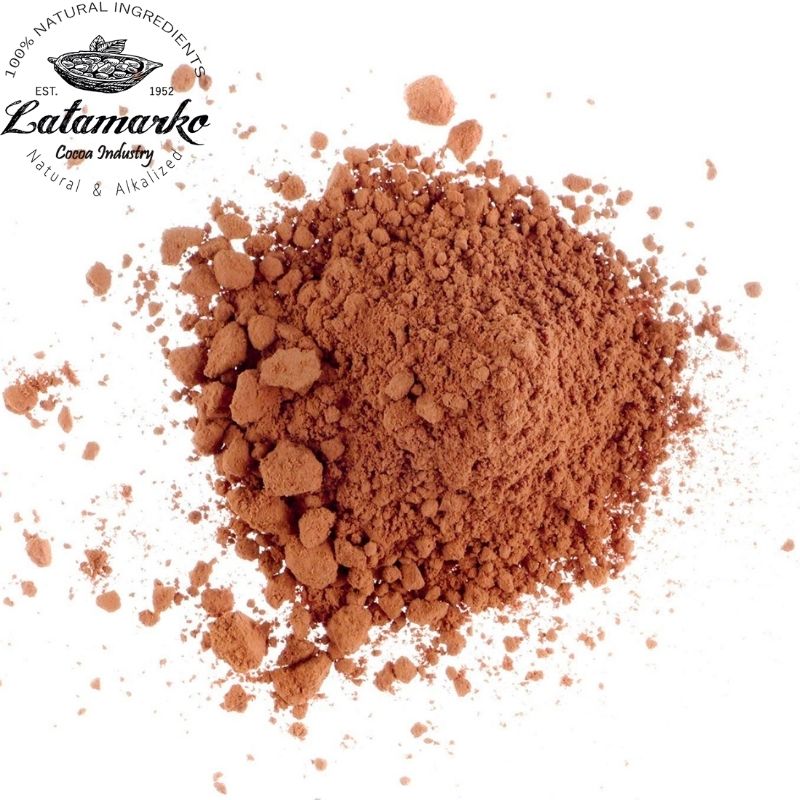
Tempering:
-
- Chocolate is tempered for proper crystallization.
Tempering in Chocolate Processing:
Tempering is a critical step in chocolate manufacturing that involves controlled heating and cooling to achieve proper crystallization of cocoa butter. Proper tempering results in a shiny appearance, a smooth texture, and a stable crystalline structure in the finished chocolate. Here’s an overview of the tempering process:
- Melting:
- The chocolate is initially melted to a temperature that fully liquefies the cocoa butter crystals.
- The temperature typically reaches around 115°F to 120°F (46°C to 49°C) for dark chocolate, and slightly lower for milk and white chocolates.
- Cooling:
- The melted chocolate is then cooled down, usually by adding solid, pre-tempered chocolate (seed chocolate) to the melted mass.
- The cooling process begins the crystallization of cocoa butter.
- Seeding with Cocoa Butter Crystals:
- The seed chocolate contains stable cocoa butter crystals that act as nuclei for the formation of new crystals in the melted chocolate.
- The seed chocolate helps initiate the desired beta crystals, which are responsible for the desirable texture and appearance of the final chocolate.
- Agitation:
- During cooling, the chocolate is continuously stirred or agitated to promote uniform crystal formation.
- Agitation prevents the formation of large cocoa butter crystals and ensures a smooth texture.
- Temperature Monitoring:
- The temperature of the chocolate is closely monitored during the cooling process.
- The temperature must be lowered gradually and precisely to allow for the proper formation of stable cocoa butter crystals.
- Reheating:
- After sufficient cooling and crystal formation, the chocolate is gently reheated to a specific working temperature.
- The working temperature varies depending on the type of chocolate (dark, milk, or white).
- Working Temperature:
- The working temperature for dark chocolate is typically around 88°F to 90°F (31°C to 32°C).
- Milk and white chocolates have slightly lower working temperatures.
- Testing for Proper Tempering:
- Chocolate tempering can be verified by conducting a simple test, such as spreading a small amount of chocolate on a piece of parchment paper and checking for gloss and snap after cooling.
- Pouring or Molding:
- Once properly tempered, the chocolate is ready for pouring into molds or coating various confections.
- Tempered chocolate sets quickly and produces a smooth, shiny finish.
- Setting and Cooling:
- The tempered chocolate is allowed to set and cool, completing the crystallization process.
- The final product has a glossy appearance, a crisp snap, and a smooth mouthfeel.
Proper tempering is essential for achieving the desired quality attributes in chocolate, and it plays a crucial role in the production of various chocolate products, including bars, truffles, and coated confections.
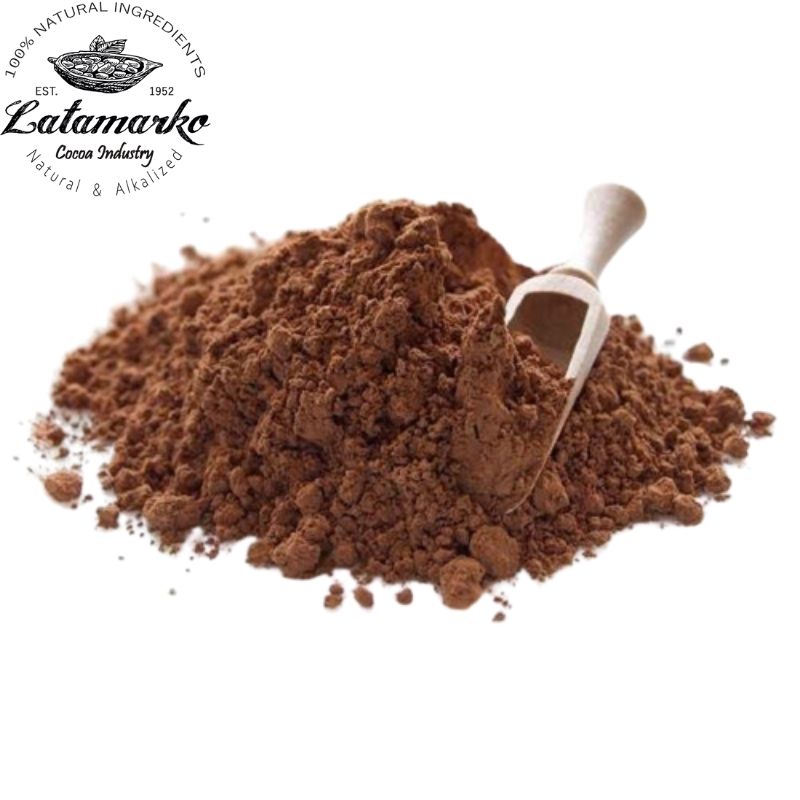
Molding:
-
- Tempered chocolate is poured into molds and allowed to solidify.
Molding in Chocolate Processing:
After chocolate has been properly tempered, the next step is molding, where the tempered chocolate is poured into molds and allowed to solidify. Molding is a key process in the creation of various chocolate products, from chocolate bars to intricately shaped pralines. Here’s an overview of the molding process:
- Tempered Chocolate:
- The chocolate used for molding must be in a properly tempered state. Tempering ensures that the chocolate will set with the desired characteristics, including a smooth texture, glossy appearance, and a crisp snap.
- Choice of Molds:
- Molds come in various shapes and sizes, depending on the intended chocolate product.
- Molds can range from simple bar-shaped molds to intricate designs for pralines and truffles.
- Pouring the Chocolate:
- The tempered chocolate is poured into the molds.
- Care is taken to fill each cavity of the mold evenly to achieve consistent shapes and thickness.
- Tapping and Vibrating:
- After pouring, the molds may be tapped or vibrated to remove any air bubbles and ensure that the chocolate fills all the details of the mold.
- This step helps create a smooth and well-defined surface.
- Scraping Excess Chocolate:
- Excess chocolate is often scraped off the top of the molds to create a clean edge.
- This excess chocolate can be collected and reused in the tempering process.
- Setting and Cooling:
- The filled molds are allowed to set and cool at room temperature or in a controlled environment.
- The cooling process allows the chocolate to solidify and take on the shape of the mold.
- Refrigeration (Optional):
- Depending on the specific chocolate product and manufacturing process, the molds may be placed in a refrigerator or a cooling tunnel to accelerate the setting process.
- Demolding:
- Once the chocolate has fully set, the molds are inverted or flexed to release the solidified chocolate pieces.
- The demolding process requires care to avoid damaging the chocolate and to preserve the details of the mold.
- Quality Inspection:
- The molded chocolates undergo a quality inspection to ensure that they meet the desired standards.
- Inspections may include checking for uniformity, shine, and overall appearance.
- Packaging:
- After passing inspection, the molded chocolates are ready for packaging.
- Packaging can range from individual wrapping for small chocolates to boxed packaging for larger quantities.
Molding is a crucial step in chocolate production as it defines the final shape and appearance of the chocolate product. The precision and attention to detail during the molding process contribute to the overall quality and aesthetic appeal of the finished chocolates.
Types of Cocoa Powder:
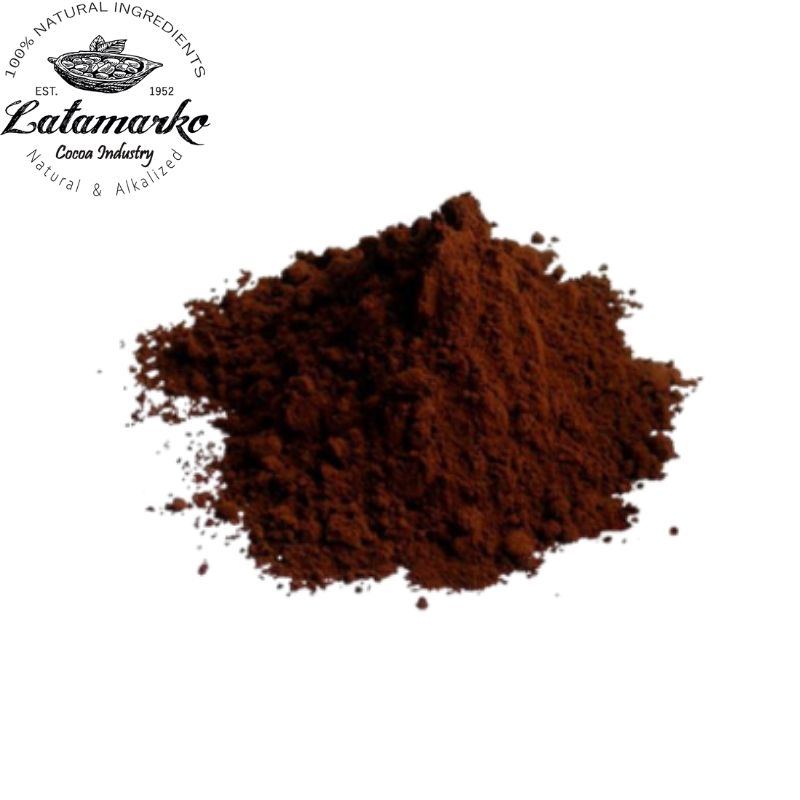
Natural Cocoa Powder:
-
- Made from cocoa solids with a natural acidity.
- Retains the original chocolate flavor and a lighter color.
- Often used in recipes with baking soda as the leavening agent.
Natural Cocoa Powder:
Natural cocoa powder is a type of cocoa powder made from cocoa solids with a natural acidity. Here are some key characteristics and uses of natural cocoa powder:
- Ingredient Source:
- Natural cocoa powder is produced by grinding roasted cocoa beans, resulting in a powder that retains the natural acidity found in cocoa beans.
- Flavor Profile:
- Natural cocoa powder retains the original and robust chocolate flavor of cocoa beans.
- It tends to have a more acidic and fruity taste compared to alkalized (Dutch-processed) cocoa powder.
- Color:
- Natural cocoa powder has a lighter color compared to alkalized cocoa powder.
- The color can range from light brown to reddish-brown, depending on factors such as the cocoa bean variety and processing methods.
- Acidity:
- The natural acidity in natural cocoa powder contributes to its distinct flavor profile.
- This acidity can enhance the chocolatey and fruity notes in recipes.
- Leavening Agent in Baking:
- Natural cocoa powder is often used in recipes that require a leavening agent such as baking soda.
- The acidity in natural cocoa powder reacts with baking soda to produce carbon dioxide, which helps the baked goods rise.
- Baking Applications:
- Natural cocoa powder is well-suited for a variety of baking applications, including cakes, brownies, cookies, and other chocolate-based desserts.
- It is a popular choice in recipes where the acidic flavor and leavening properties are desired.
- Versatility:
- Natural cocoa powder is versatile and can be used in both sweet and savory recipes.
- It adds a rich chocolate flavor and depth to dishes beyond traditional desserts.
- Health Benefits:
- Like all cocoa products, natural cocoa powder contains antioxidants and other compounds that may have potential health benefits.
- The natural form of cocoa retains more of these beneficial compounds compared to some processed cocoa products.
- Storage:
- Natural cocoa powder should be stored in a cool, dry place to prevent moisture absorption and maintain its quality.
- Proper storage helps preserve the flavor and prevent clumping.
When selecting cocoa powder for a recipe, the choice between natural and alkalized cocoa powder depends on the desired flavor profile and the specific requirements of the recipe, especially in terms of leavening agents. Natural cocoa powder is prized for its intense chocolate flavor and is a favorite in recipes where its acidity and distinct taste are essential components.
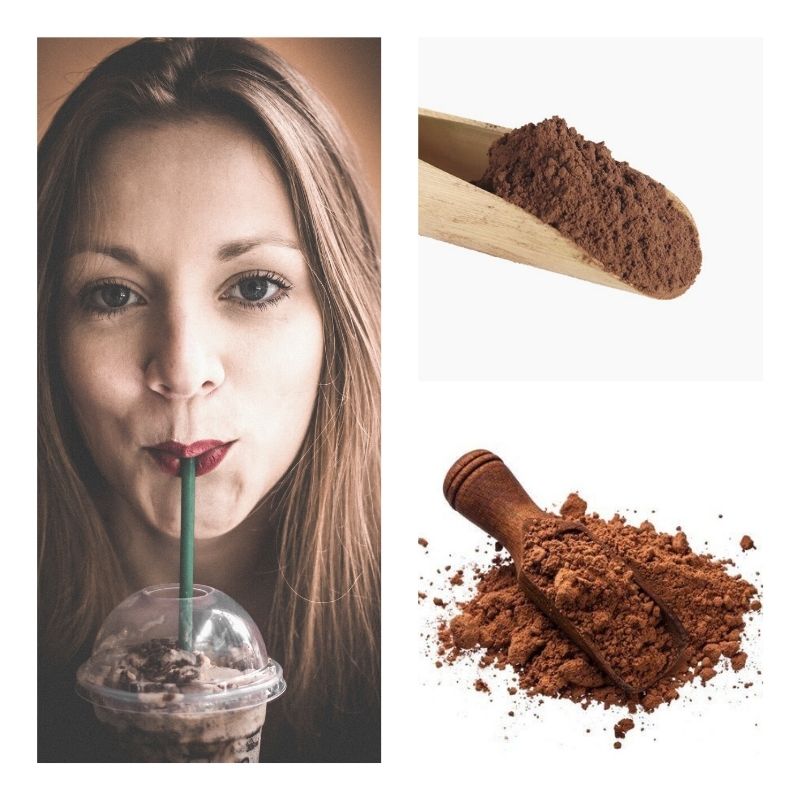
Alkalized (Dutch-Processed) Cocoa Powder:
-
- Treated with an alkaline solution (usually potassium carbonate).
- Results in a darker color and milder flavor.
- Reduced acidity, which may affect the leavening process.
- Often preferred in recipes with baking powder as the leavening agent.
Alkalized (Dutch-Processed) Cocoa Powder:
Alkalized cocoa powder, also known as Dutch-processed cocoa powder, undergoes a specific treatment with an alkaline solution, typically potassium carbonate. This process has several distinct characteristics that differentiate it from natural cocoa powder. Here are key features and uses of alkalized cocoa powder:
- Alkalization Process:
- Alkalized cocoa powder is treated with an alkaline solution, usually potassium carbonate, during processing.
- This alkalization process modifies the pH of the cocoa, resulting in a less acidic product compared to natural cocoa powder.
- Color:
- The alkalization process darkens the color of cocoa powder, giving it a deeper, more intense hue.
- Alkalized cocoa powder typically has a reddish-brown to dark brown color.
- Flavor Profile:
- Alkalized cocoa powder has a milder and more rounded flavor compared to natural cocoa powder.
- The alkalization process reduces the inherent acidity of cocoa, resulting in a smoother taste.
- Reduced Acidity:
- The alkalization process significantly reduces the natural acidity found in cocoa beans.
- This reduction in acidity may impact the leavening process in recipes, making it less reactive than natural cocoa powder with baking soda.
- Leavening Agent in Baking:
- Alkalized cocoa powder is often preferred in recipes that use baking powder as the leavening agent.
- Baking powder contains both an acidic component and a basic component. The reduced acidity of alkalized cocoa complements the use of baking powder in recipes.
- Applications in Baking:
- Alkalized cocoa powder is commonly used in a wide range of baking applications, including cakes, cookies, and brownies.
- It is particularly favored in recipes where a milder chocolate flavor and a darker color are desired.
- Solubility:
- Alkalized cocoa powder often exhibits improved solubility in liquids compared to natural cocoa powder.
- This can contribute to smoother texture and better integration in certain recipes.
- Versatility:
- Alkalized cocoa powder is versatile and suitable for both sweet and savory recipes.
- It is a popular choice in the production of chocolate-flavored beverages, ice cream, and confectionery.
- Storage:
- Like natural cocoa powder, alkalized cocoa powder should be stored in a cool, dry place to maintain its quality.
- Proper storage prevents clumping and preserves the flavor characteristics.
When choosing between natural and alkalized cocoa powder, bakers consider the specific flavor, color, and leavening properties required for their recipes. Alkalized cocoa powder is often selected for its darker color, milder taste, and compatibility with baking powder in certain baked goods.

Types of Alkalization:
-
- Dutch-Processed (or European Process): Treated with an alkaline solution before or after fermentation.
- Natural Cocoa Processed with Alkali (American Process): Alkalization occurs after fermentation.
Types of Alkalization in Cocoa Processing:
Alkalization, also known as Dutch-processing, is a treatment applied to cocoa powder using an alkaline solution, typically potassium carbonate. This process influences the color, flavor, and acidity of the cocoa powder. There are two primary types of alkalization methods: Dutch-Processed (or European Process) and Natural Cocoa Processed with Alkali (American Process).
- Dutch-Processed (European Process):
- Timing of Alkalization: Alkalization occurs either before or after the fermentation process.
- Characteristics:
- Color: Results in a darker color, typically dark brown or reddish-brown.
- Flavor: Yields a milder and smoother flavor by neutralizing the natural acidity of cocoa.
- Applications: Often preferred in European-style and gourmet chocolates, desserts, and baked goods.
- Baking: Suitable for recipes using baking powder as the leavening agent.
- Process Overview:
- Cocoa beans are fermented.
- Alkalization with potassium carbonate is applied before or after fermentation.
- Drying, roasting, and grinding follow to produce Dutch-processed cocoa powder.
- Natural Cocoa Processed with Alkali (American Process):
- Timing of Alkalization: Alkalization occurs after the fermentation process.
- Characteristics:
- Color: Yields a darker color compared to natural cocoa powder but lighter than Dutch-processed cocoa.
- Flavor: Has a milder taste with reduced acidity, similar to Dutch-processed cocoa but not as extreme.
- Applications: Commonly used in various chocolate-flavored products, beverages, and baking.
- Baking: Suitable for recipes using baking powder as the leavening agent.
- Process Overview:
- Cocoa beans are fermented.
- Alkalization with potassium carbonate is applied after fermentation.
- Drying, roasting, and grinding follow to produce natural cocoa processed with alkali.
Considerations:
- The choice between Dutch-processed and natural cocoa processed with alkali depends on the desired characteristics in the final product.
- Dutch-processed cocoa is often favored for its darker color and smoother flavor, while natural cocoa processed with alkali offers a milder option.
- The application in recipes, especially concerning leavening agents (baking soda or baking powder), is a key factor in choosing the appropriate cocoa powder.
Both types of alkalization methods contribute to the diversity of cocoa products available for different culinary and confectionery applications.
Varieties of Cocoa Powder:
-
- High-Fat Cocoa Powder: Contains a higher percentage of cocoa butter, resulting in a richer flavor.
- Medium-Fat Cocoa Powder: Balanced cocoa butter content.
- Low-Fat (Reduced-Fat) Cocoa Powder: Lower cocoa butter content, often used in recipes where fat content needs to be controlled.
Varieties of Cocoa Powder:
Cocoa powder comes in different varieties based on its fat content, and each type has unique characteristics. Here are the main varieties of cocoa powder:
- High-Fat Cocoa Powder:
- Characteristics:
- Contains a higher percentage of cocoa butter compared to other varieties.
- Rich and intense chocolate flavor.
- Applications:
- Ideal for recipes where a pronounced chocolate flavor and richness are desired.
- Commonly used in premium chocolates, truffles, and desserts.
- Characteristics:
- Medium-Fat Cocoa Powder:
- Characteristics:
- Balanced cocoa butter content.
- Offers a middle ground between the richness of high-fat and the leanness of low-fat cocoa powder.
- Applications:
- Versatile and suitable for a wide range of recipes, including cakes, cookies, and brownies.
- Provides a good compromise between flavor and fat content.
- Characteristics:
- Low-Fat (Reduced-Fat) Cocoa Powder:
- Characteristics:
- Lower cocoa butter content compared to high-fat and medium-fat varieties.
- Typically used in recipes where fat content needs to be controlled.
- Applications:
- Suitable for health-conscious recipes or applications where a lower-fat option is preferred.
- Used in products like dietary desserts, certain beverages, and recipes requiring a lighter chocolate flavor.
- Characteristics:
Considerations:
- The fat content in cocoa powder influences both the flavor and texture of the final product.
- The choice of cocoa powder variety depends on the specific requirements of a recipe and the desired outcome.
- Different recipes may call for different varieties of cocoa powder based on factors such as fat content, flavor intensity, and overall richness.
When selecting cocoa powder for a particular application, it’s essential to consider the recipe’s specifications and the desired taste and texture of the end product. The variety of cocoa powder chosen contributes significantly to the overall sensory experience of chocolate-based creations.
Considerations:
- The choice between natural and alkalized cocoa powder depends on the recipe’s requirements and the desired flavor profile.
- Alkalized cocoa powder is often used in applications like beverages, ice cream, and chocolate confections, while natural cocoa powder is common in baking recipes.
- The cocoa powder’s fat content influences the richness and mouthfeel of the final product.
For specific details about the alkalized and natural cocoa powder produced by a particular brand or company, it’s best to refer to the product specifications provided by the manufacturer.
Indulge in Excellence with MT Royal Cocoa Powders!
Discover the finest selection of alkalized and natural cocoa powders at MT Royal – your premier supplier of quality cocoa products. Elevate your culinary creations with our diverse range sourced from world-famous brands.
Why Choose MT Royal?
Global Variety:
- MT Royal brings you an extensive collection of alkalized and natural cocoa powders, ensuring you have access to the best flavors from around the world.
World-Famous Brands:
- We take pride in supplying cocoa powders from renowned brands, guaranteeing exceptional quality and taste for your culinary delights.
Global Reach, Swift Delivery:
- With our commitment to customer satisfaction, MT Royal offers fast and reliable worldwide delivery. Your orders reach you promptly, ensuring you have the ingredients you need when you need them.
Secure Transactions:
- Our terms of sale are designed for your peace of mind. MT Royal facilitates secure transactions with options such as Letter of Credit (LC) and Usance, providing you with a seamless purchasing experience.
Swift and Secure Transactions:
- Experience the convenience of streamlined transactions, allowing you to focus on what you do best – creating delectable treats.
Whether you’re a chocolatier, baker, or food enthusiast, MT Royal is your trusted partner in sourcing the finest cocoa powders. Elevate your recipes and delight your customers with the unparalleled quality that MT Royal delivers.



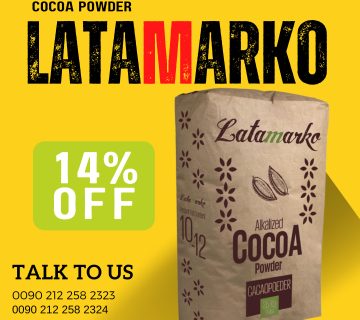
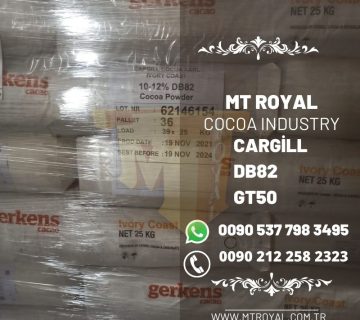
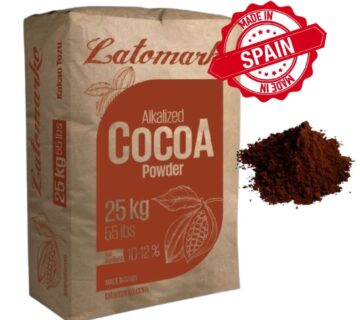
No comment